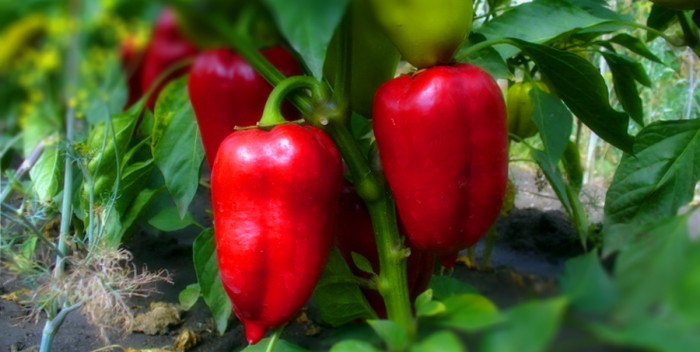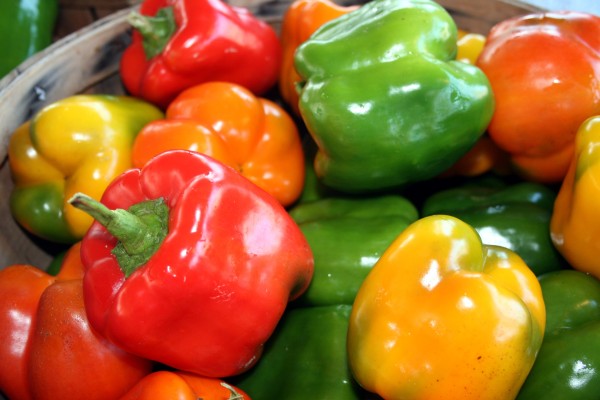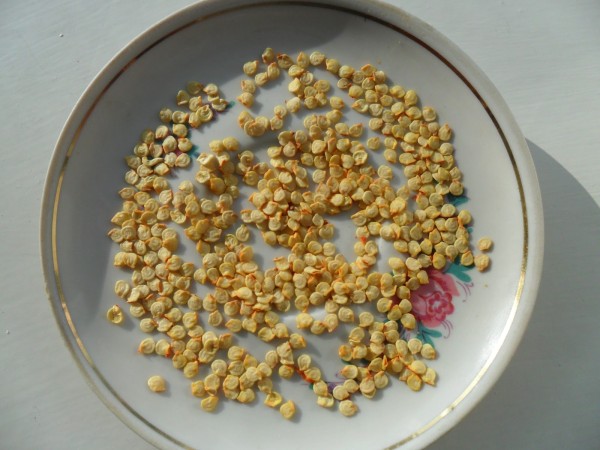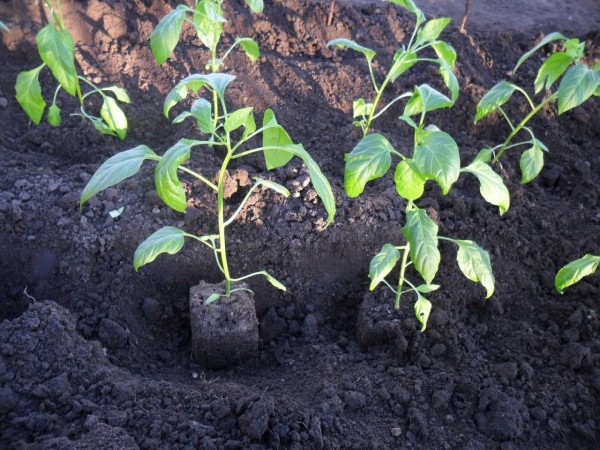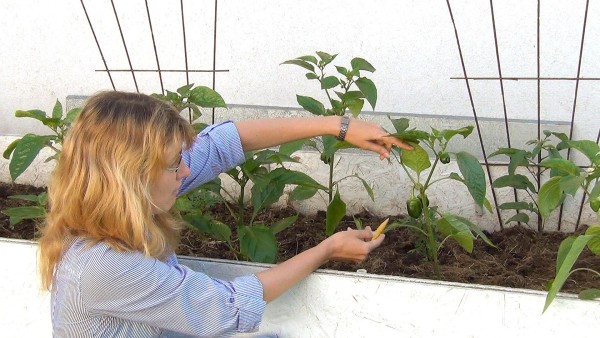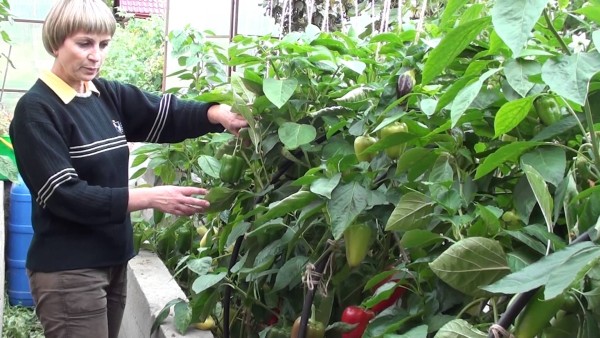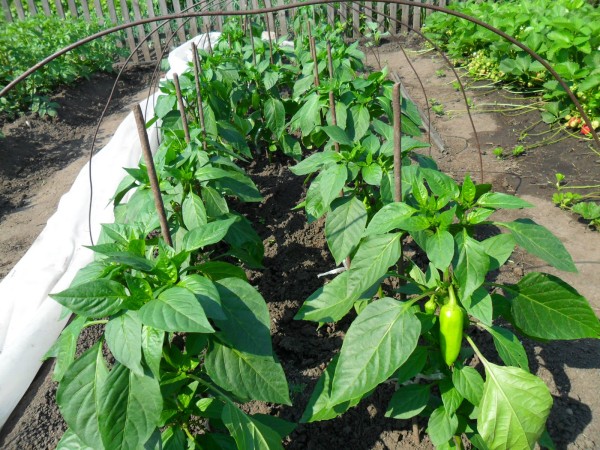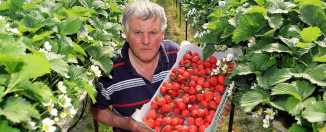Pepper: planting and care
Today, sweet peppers are found on almost every table. It is very often used to prepare a variety of dishes. Everyone can grow bell peppers, it is only important to choose the right variety and properly care for the vegetable.
Content
Pepper varieties
Big Mama sweet peppers are suitable for growing both outdoors and in a variety of greenhouses. The bush of this variety has a semi-spreading shape and grows up to 1 meter in height. The fruits of this variety gain weight up to 200 g, and the wall thickness can be 1.3 cm. Peppers have a rectangular shape and are smooth. Fruit ripening time - 120 days. Delicious fruits can be eaten both fresh and canned.
To mid-season varieties the Bogatyr pepper variety belongs. The ripening time of pepper from the moment of germination is about 4 months. The bush of this variety turns out to be spreading and grows up to 60 cm in height. The fruits are shaped like a large prism. The peel of the fruit is slightly bumpy during the ripening period, it turns light green, and then turns red. The fruits of this variety weigh up to 180 g. They can be used fresh, cook hot dishes from them, canned and frozen.
The Swallow variety belongs to the early ripening varieties. It is suitable for growing in a greenhouse or open garden. The shrub of this variety can reach a height of 60 cm. Fruits grow in the form of a cone and are formed only on the lateral branches. During the ripeness period, the fruits acquire a light green color. The weight of ripe fruits is about 70 g with a wall thickness of up to 0.5 cm. These peppers can be eaten raw, canned or cooked hot.
In the open field, as well as in greenhouses, you can grow variety Kupets. Its ripening rate is from 100 days. The fruits are formed in the form of a pyramid, and the height of the bush is about 1 meter. When ripe, the fruits turn red, but they can be eaten already at the stage of light green color. The weight of the fruits of this variety is up to 130 g. They can be used for cooking various dishes, canning or eating raw.
Growing house peppers
First you need to grow seedlings. Before planting, you need to prepare the seeds. They are disinfected in a pinkish solution of potassium permanganate. Then washed with cool water and soaked in nutrient solution for better germination.
Prepare containers in advance in which you will plant seeds. Be sure to put a layer of drainage on the bottom of the pot, and then fill the pot with soil. It is best to use ready-made soil for garden plants. Plant the seeds prepared in advance in loose soil in several pieces, sprinkle with earth, water and cover with a film on top. Keep containers with seedlings at a temperature of +25 degrees until the first sprouts appear.
When the peppers hatch, the film covering the pots with seedlings, pierce in several places. After two leaves appear on the seedlings, remove the film. Now you can dive strong plants into separate small pots for further cultivation.
The pick is done like this:
- Water the soil in a new pot abundantly per day.
- Make a hole in the center of the pot.
- Gently lift the sprout out of the ground while shaking off the ground.
- Pin the tip of the root one third of the length. This will allow for a stronger root system to form.
- Place the sprout in a new location so that the leaves protrude 2 cm from the soil.
- Compact the soil around the seedling and sprinkle with water.
Planting pepper in the greenhouse
After the seedlings reach the age of 60 days, they can be planted in a permanent place in the greenhouse. Greenhouses made of polycarbonate are great. They maintain the optimum temperature for the plants. The average daily air temperature during planting in the greenhouse should be at least +10 degrees.
Before planting seedlings, the garden must be dug up and fertilized with a mixture of nitrate, humus, double superphosphate and ash. After that, the soil must be dug up and loosened again.
Before transplanting, the seedlings must be well watered. It is best to transplant seedlings at a time when there is no strong solar activity, namely in the evening. Please note that peppers are capable of cross-pollination, so do not plant sweet and bitter varieties together.
To prevent the growth of the plant from slowing down, leave only the roots of the plant in the soil. If you grew seedlings in peat pots, then transplant the seedlings in them. Maintain the optimum spacing between seedlings. It should be about 25 cm, taking into account the fact that the pepper will need to be tied up as it grows. If you are planting undersized peppers, then this distance can be reduced to 20 cm. Leave a gap of 80 cm between the beds. This will create a convenient approach to the beds and allow a strong root system to form.
Greenhouse Pepper Care
When the plant reaches a height of 20 cm, it must be tied to a support and pinned. To do this, it is necessary to cut off all the first flowers and remove additional shoots, except for 2 or 3 lateral ones. This will allow the correct crown to form and stimulate the formation of ovaries.
Right water plants. The soil should be constantly moderately moist. On hot days, the greenhouse needs to be shaded to keep the fruit strong. For larger fruits, feed the plant once every two weeks. Urea and complex fertilizers are suitable for feeding.
Planting pepper in the ground
If you do not plan to grow peppers in a greenhouse, then plant the grown seedlings when the air temperature does not drop below 15 degrees. This is usually done in the last decade of May or early June.
It is better to prepare the soil where the peppers will grow in advance. To do this, the site is dug up since the fall and fertilizers are applied for each square meter, 50 g of potash and phosphorus fertilizers. In the spring, ammonium nitrate is introduced and the area is watered with a disinfecting solution.
Before planting, make holes, observing the distance between them 50 cm in a row, and keep a distance of 60 cm between rows. The holes should have a depth equal to the length of the root system. Put a spoonful of mineral fertilizers in each hole. Now remove the seedlings from the pot along with the clod of earth and place in the hole. Fill the depression halfway with earth and water. After the moisture is completely absorbed, top up the soil and cover the hole with peat.
Pepper care in soil
After planting seedlings, water the plants every week. First, use one and a half liters of water for each plant, and then increase this rate to two liters. Watering should be stopped a couple of weeks before the end of the harvest. After watering and rain, the soil near the plant must be loosened so that a crust does not form.
First time deposit top dressing need two weeks after transplanting, using bird droppings or slurry. In addition, wood ash, superphosphate and potassium chloride are used for feeding.
During frosts, it is better to protect peppers with special shelters made from scrap materials. Every week after harvesting the fruits, it is necessary to prune the bush.
